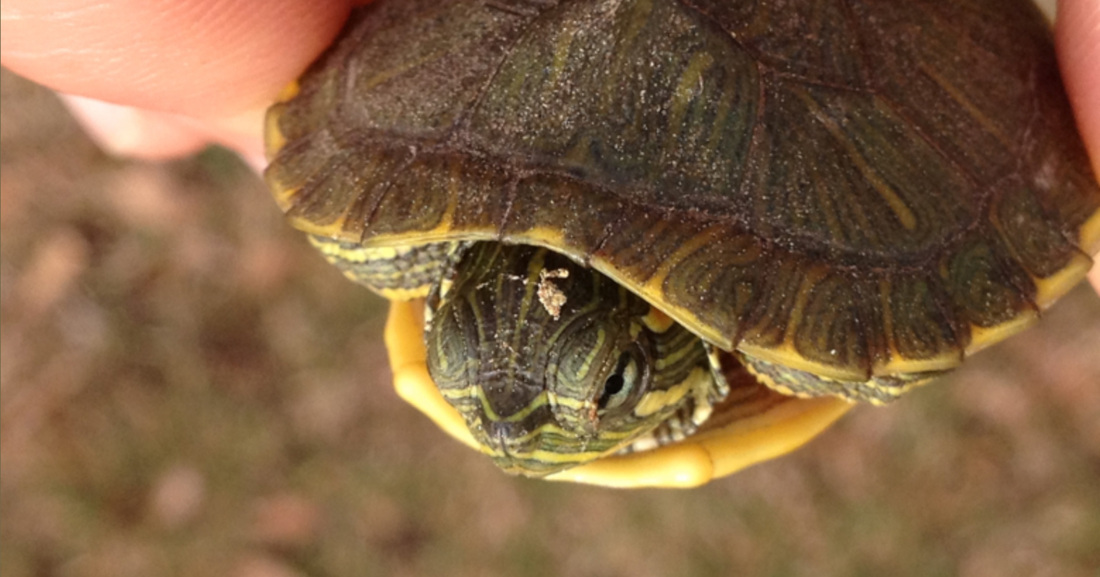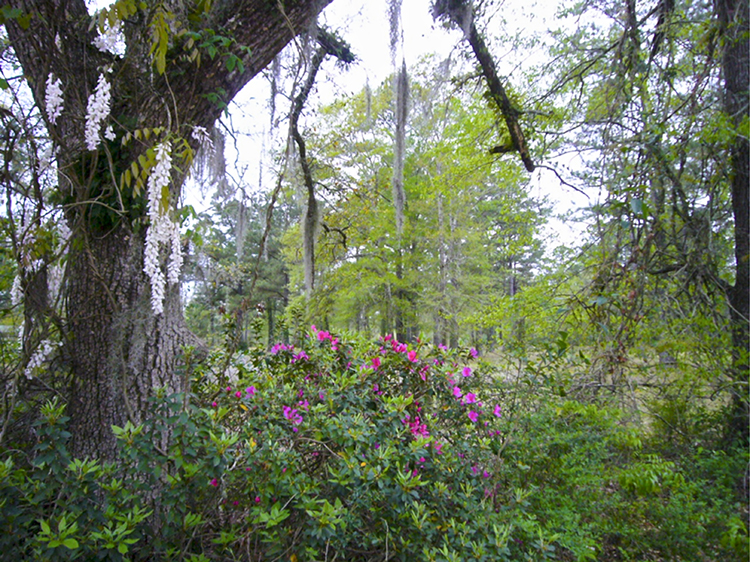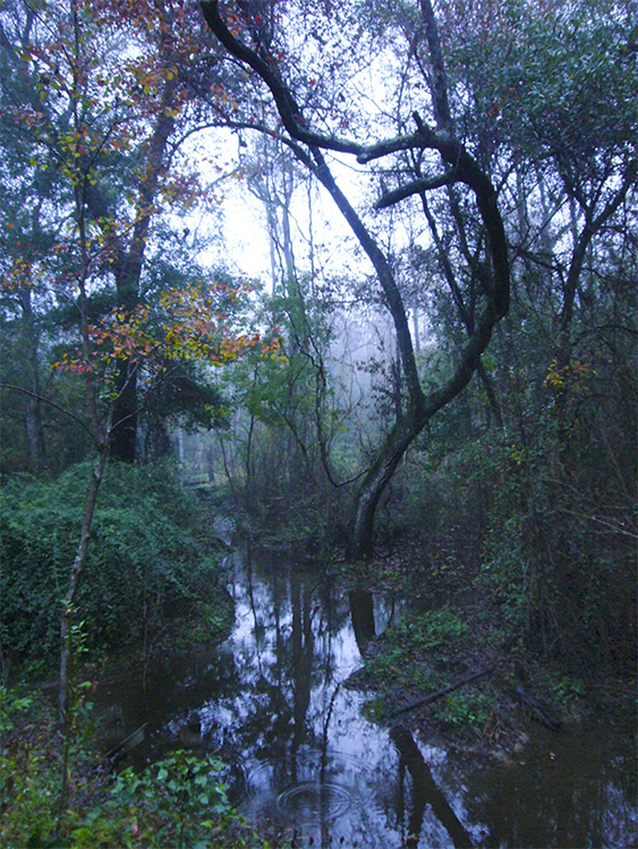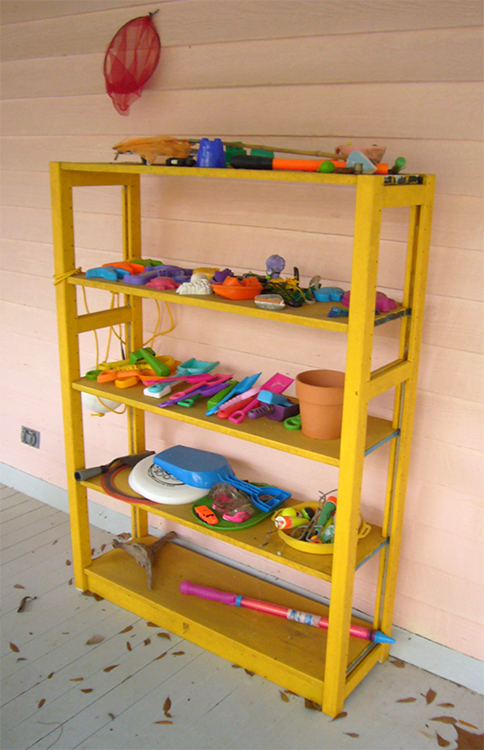Swamp Spring
by Ana Balka
- "Here the people pull you in, and the swamp slowly plants your feet into its ever-shifting mud."
Bird pairs always remind me of older couples hunting for antiques. They poke around, mumble, and commiserate onwhich of our porch’s various corners and niches might suffice for their yearly egg condo. I don’t think these cardinals are going to take up residence in a garden clog today, but warblers might if we don’t turn them over. They were Northern Parulas, we figured out, the ones who came a couple of years ago and set up house in one of Steven’s boots.
I am neither a bird expert, nor do I possess a vast knowledge of trees, flowers, or other plants. I am, however, seeing the patterns of change come in waves, the cycles of the plants and animals with whom we share real estate becoming old friends as I see them repeat each year. I take photos of the massive camellia bushes coming into bloom, the Bradford pear as it goes white, the little turtles crossing the driveway, and the skinny young lizards, even though I realize that I have almost identical photo albums from last year and the year before. It makes me think of my grandmother, who lived in the Nebraska panhandle her whole life and wrote letters that summarized the arrival of the robins, the deer sightings, the spring rains, the calving, the growth of the flowers. In the Nebraska panhandle, the past is visible in the still-clear Oregon Trail ruts that cut through the grassy landscape on gentle plateaus. If you stand in the ruts on the small rise above the town where my grandparents grew up, the area below looks like a diorama, a set. It was incredible when I first saw the town from that angle, thinking of my grandparents living out there all those years with a relatively small cast of people and playing out life on this giant stage under the wide sky. In Hancock County, Mississippi, the past curls like jasmine in the trees, and rises and falls with the tides. When you take a kayak up Bayou Talla, or stand in Waveland at the corner of Nicholson Avenue and Beach Boulevard and look up at the lot where Eliza Nicholson’s mansion once stood, you can feel the past in ways unique to here. Many places like to say, “Once you’ve stayed here long enough, you won’t be able to leave,” but I can sense some truth to that in Hancock County. Here the people pull you in, and the swamp slowly plants your feet into its ever-shifting mud. continue reading below
My husband and I moved into a house on several acres of swamp and pasture next to Bayou Talla in February 2013. Neither of us had ever lived in this part of the country before, and neither of us had lived rurally in our adult lives. The last place we lived was London. He is Dutch; I’m originally from southeastern Nebraska, and we met in Atlanta. He’s a ship captain, so there was always a good chance that work would bring him to the Gulf. When we first met he would tease me about his romantic European desire to live in the swamps of Mississippi, and I would tell him that I sincerely wished him the best in that endeavor. I never suspected that less than five years later, I would be the one to locate a home for us in Kiln, Mississippi when his company wanted us to move to the Gulf Coast from London.
Say you live in the Kiln, and you will get some combination of a number of standard responses. If you’re anywhere between Baton Rouge and Mobile, whomever you’re talking to will tell you that their grandma/aunt/mother’s cousin is from the Kiln and they have amazing memories of going there as a kid and swimming in the river. Then they’ll ask if you know Brett Favre. They might ask if you have ever been to that, “...uuum, that one bar. What was it called... I saw it on ESPN. Oh—The Broke Spoke! You know that place?” People generally seem impressed when I say that yes, we live in the vicinity of the Broke Spoke, and I have indeed been there. At night, even. And yes, to the inevitable next question: I have had moonshine. Well wait, actually. I think it was homemade wine. The first year is always a fascinating time when you move into a community. Each person you meet has the potential to become a lifelong friend, and you have no idea what pattern you will weave into the local fabric over time. It felt like there was something more dramatic and poignant about that phase of living here than I’ve experienced in other places. Maybe it’s just me. Maybe it’s because so many of the people who live here actually grew up here, and come from families who have been here for generations. The history is right in front of you in the stories of the people you meet. Their very names tell stories. continue reading below
I attended a wedding last week in the Kiln, the marriage of the daughter of a friend we know through Pop’s Southern Comfort Foods on Highway 603. (Pop’s has been a focal point of our life in Kiln since Steven and I arrived, which is something you can read more about here. We love Pop’s. You should go there.) More than 500 people crowded into the Church of the Annunciation (which used to be the gymnasium of Kiln Consolidated High School until the school closed in 1959; the smaller, original church is just across the road), for the wedding.
Probably a third of Kiln’s population was packed into that church and/or at the reception afterwards (it was a spectacular wedding—congratulations to Lindsey (Lee) and Jonathan Bounds). Here was the continuing narrative of a place that has seen breathtaking ups and catastrophic downs—followed by renewal—that is in many ways typical of small town America, but whose stories are anything but typical. I would not have missed being there, even though I did not know tons of people at the wedding. This was part of the history of the people of this town. Kiln’s first European settlers came in the early 18th century to an area originally inhabited by Choctaw and Muskhogean people (see the Hancock County Historical Society’s fantastic website for this and so much more). Many more people arrived during the booming timber milling years, and Kiln was a thriving town with good services and schools. But after 1930, following the forests’ depletion and the resulting mill closings (not to mention the stock market crash and the Depression that followed), people either left or stayed and did what they could to get by. For some, that apparently included capitalizing on location, resources, and know-how to create a moonshine economy during the mid-century. This left Kiln with more of an outlawish reputation than may be deserved. continue reading below
Then of course, everyone in this part of the country knows about the cycles of loss and rebirth when it comes to the weather: Everyone here has a story, and many people have told me that Katrina took everything they had. Tell someone in Kiln, Waveland, or Bay St. Louis that you think this is an amazing place, and there is a good chance they’ll say, “You should have seen it before.” I tell outsiders that now I understand much more about what was lost, and what can’t be taken away from this place and these people, and what compels a community to rebuild and ride out more seasons.
The warblers are back. They’re checking out a flowerpot in the collection of toys that we’ve accrued from our walks on the beach. Maybe they’ll set up their little incubator in there this year. Comments are closed.
|
Categories
All
Archives
July 2024
|
Shoofly Magazine Partners
Our Shoofly Partners are local businesses and organizations who share our mission to enrich community life in Bay St. Louis, Waveland, Diamondhead and Pass Christian. These are limited in number to maximize visibility. Email us now to become a Shoofly Partner!
































 RSS Feed
RSS Feed























